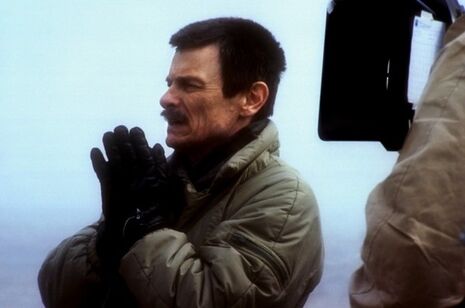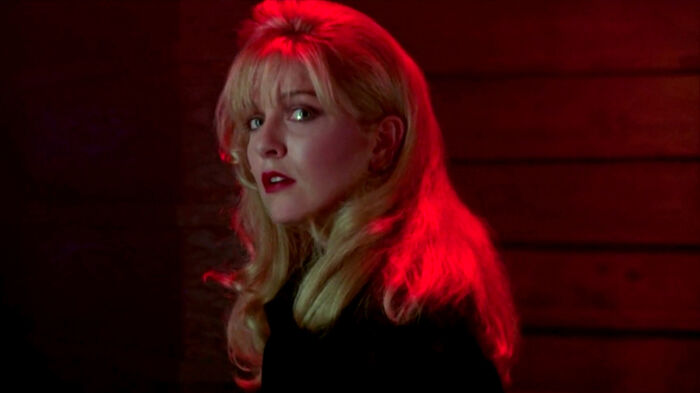Andrei Rublev: An Extraordinary Filmographic Icon
After a recent showing in Magdalene, Madeleine Pulman-Jones takes a look at the 1966 film depicting the life of the 15th-century Russian icon

There is something there about the impulse to express, to name, or to picture something about the human capacity to hold suffering at arm’s length, without either denying it or giving way to it… - Rowan Williams, introducing Tarkovsky’s Andrei Rublev
In August, I went to the White Cube with a friend to see their exhibition ‘Memory Palace.’ After working our way through a series of pristine exhibition spaces, we stumbled clumsily through a pair of black curtains into a small auditorium. As is often the way with video-art, we realised immediately that we had come in somewhere in the middle of the piece. I recognised Gene Kelly immediately, quintessential American in Paris rubbing out a self-portrait in a chambre de bonne as quickly as he had drawn it. I recognised Marlene Dietrich taking a sledgehammer to a sculpture of herself in Song of Songs. I glanced down at my exhibition leaflet. We were watching ‘Made to be Destroyed’ by Cristian Marclay – a montage of cinematic moments depicting the destruction of art. Looking back up at the screen, I gasped, and grasped my friend’s knee. We were watching paint, thrown in anger, erupt onto a white wall. All the art we had walked past over the preceding hour began to recede into the distance – to fold itself neatly into the drawers of our own memory. Flickering on the screen in the darkness for but a few of seconds, this shadowy figure and his anguish did not fit tidily into either the video art, or the exhibition as a whole. The scene demands of its viewer a stillness and passivity made possible only by lengthy and extreme stillness. The scene was from Andrei Rublev.
To try and explain plot details or even describe specific images from the film is of little use – this is a film which must be lived through
Months later, on a chilly Cambridge Monday, crowds piled into Magdalene’s Cripps Court auditorium for three and a half-hours of such extreme stillness. It was just past dinner-time, and we were are all already tired – of work, of the cold, of the day. Somehow, we had all made it to Magdalene Fleapit’s screening of Tarkovsky’s Andrei Rublev (1966, USSR). We listened as former Archbishop of Canterbury and current master of Magdalene, Rowan Williams took to the stage to introduce us to “this extraordinary filmographic icon.” We applauded him, the film began. We were silent.
We watched Andrei Rublev as we might look at a renaissance fresco. We strained our eyes in order to catch fleeting yet significant details, just as we might strain our necks looking further and further upwards to a church’s peak – towards a sacred image just beyond our reach. Tarkovsky’s Rublev is as seamless as a fresco, its images blending into sequences, which blend into chapters, which do not quite blend into a narrative. As Rowan Williams suggested in his introduction, the film acts itself as a kind of icon, a way of accessing a spiritual, creative energy – a divine grace.
For all Rublev’s cinematic effortlessness, it is a constant reminder of the difficulty of creating. Tarkovsky is less interested in perfection than in artistic frustration – the throwing of the paint against the wall. Set in 15th century Russia, Rublev is a revelatory meeting point of the lyrical and the epic. Centred around the life of Russia’s most famous icon painter, eponymous Andrei Rublev, the film encompasses everything from Tatar invasions, to fratricide, to religious services, to pagan rituals, to lovemaking, to personal despair, and back again. it is a film almost impossible to summarise – and why would you want to?
The event’s organiser, Isaac Zamet, revealed that he had wanted to invite Williams to introduce the film after sitting next to him at matriculation dinner and learning that Rublev was one of his favourite films. Rarely have matriculation dinner seating plans led to such serendipitous encounters. Having Rowan Williams introduce the film was magical for more than his religious insight – it was magical because Rowan Williams is a fan of this film. When asked what his favourite film is, Williams claimed to reply that, “it’s a close run thing between Tarkovsky’s Rublev and the Muppets’ Christmas Carol.” Humorous though this may be, it reflects an enthusiasm for the cinematic experience that goes beyond film-snobbery, rooting itself in the collective experience of movie-going.
To try and explain plot details or even describe specific images from the film is of little use – this is a film which must be lived through. Instead, I leave you with Williams’ final words of advice before the screening began, to, “absorb this extraordinary filmographic icon, which is what it is. To my mind it conveys some of that energy and cohesive grace that art ought to channel or to embody.”
 News / Clare Hall spent over £500k opposing busway 24 December 2025
News / Clare Hall spent over £500k opposing busway 24 December 2025 Comment / The ‘class’ of Cambridge24 December 2025
Comment / The ‘class’ of Cambridge24 December 2025 News / Caius mourns its tree-mendous loss23 December 2025
News / Caius mourns its tree-mendous loss23 December 2025 Comment / League tables do more harm than good26 December 2025
Comment / League tables do more harm than good26 December 2025 News / Girton JCR publishes open letter expressing solidarity with Palestine25 December 2025
News / Girton JCR publishes open letter expressing solidarity with Palestine25 December 2025









